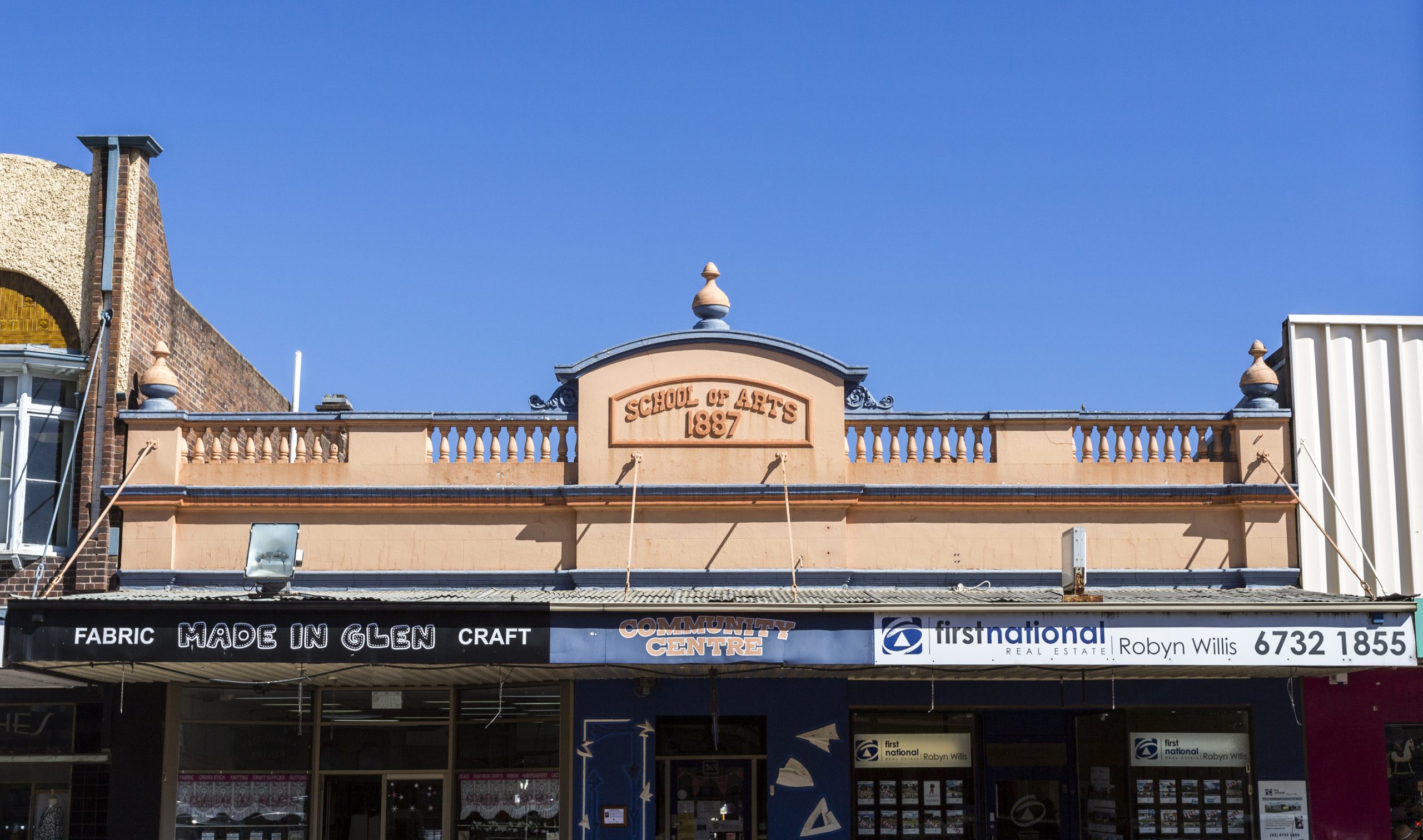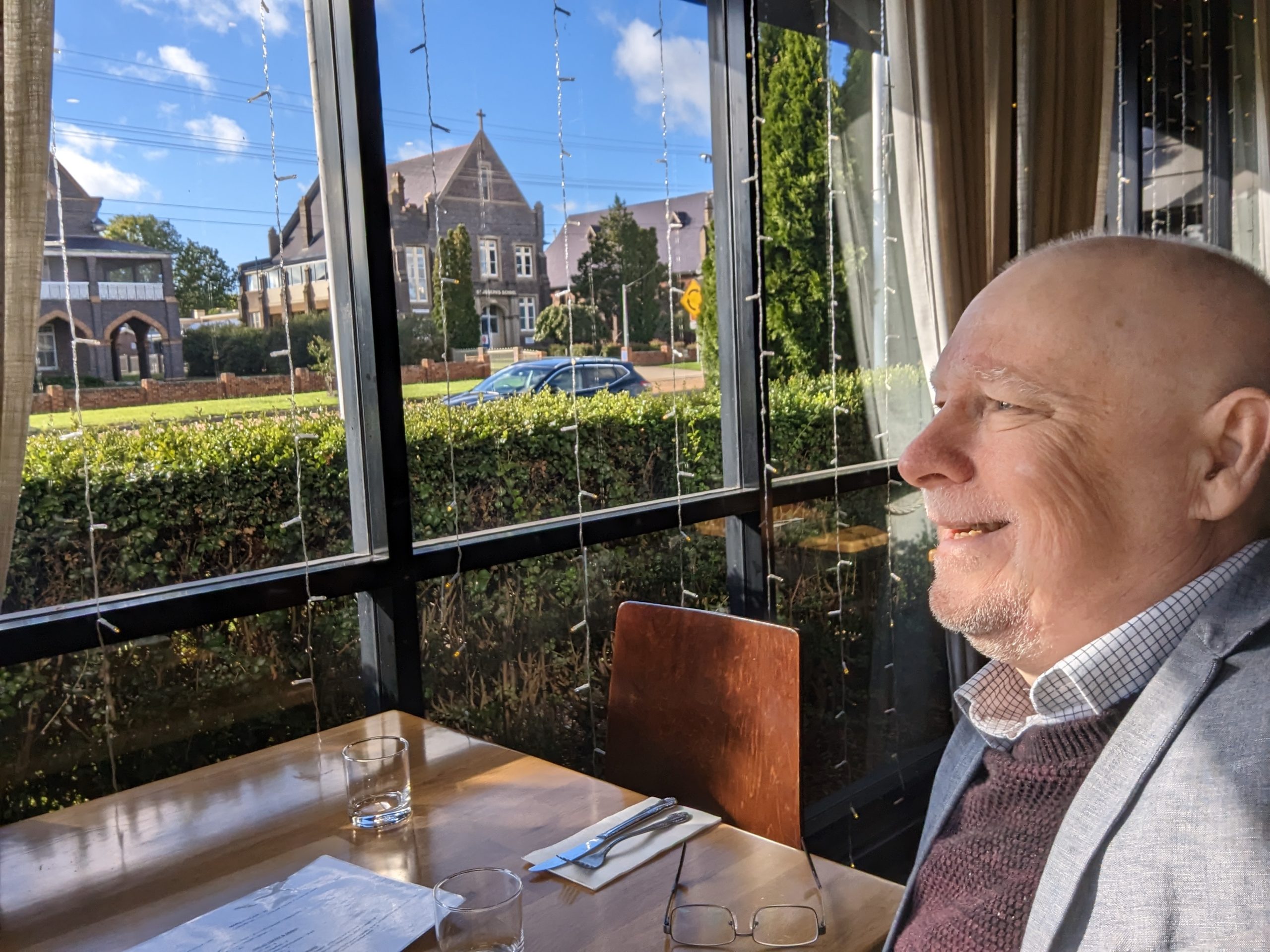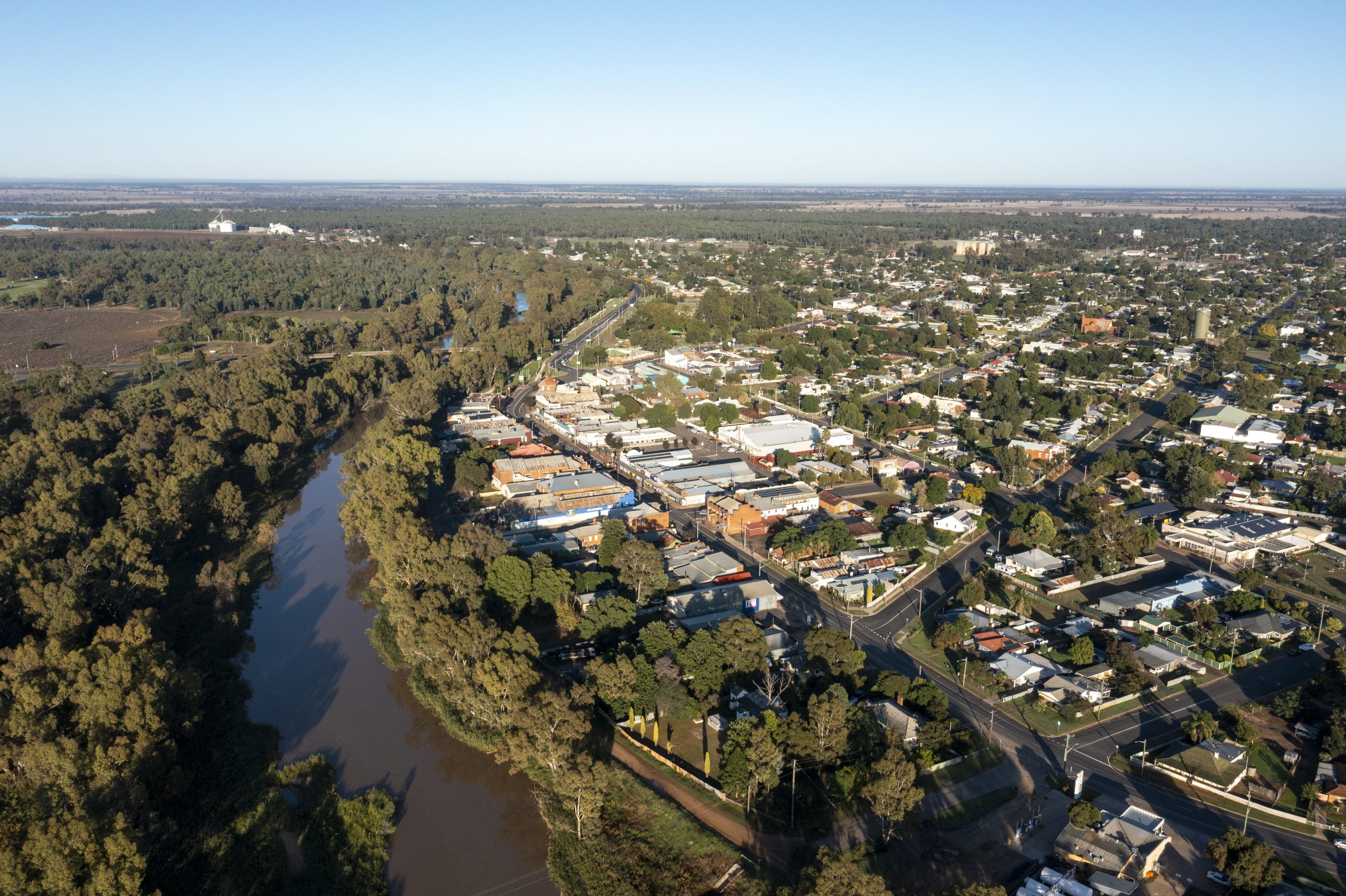Image 1: Facade of the 1887 Italianate style rendered brick with balustrade parapet building, in the rural town of Glen Innes, New South Wales, Australia. Photo 149222058 / Glen Innes © Antonio Ribeiro | Dreamstime.com
My mate Ian and I love Glen Innes, NSW. It is a typical Australian country town if such a creature exists. If not, it is the best of Australian country towns – cool climate in the hot summer, a heritage town with great happiness and sorrow, highly cultured in both Indigenous and Celtic histories, and, importantly, it connects with personal histories (mine in the least). Pastoralists, Ngarabal folk, bushrangers, and Sir Henry Parkes (1815-1896) who laid the Town Hall foundation stone in 1887. Parkes, a New South Wales Premier, is known as the father of the nation. Parkes delivered his famous Tenterfield Oration in 1889, which yielded a federal conference in 1890 and a Constitutional Convention in 1891.
Image 2: 2023-04-09 Breakfast at The Highlands Restaurant, Glen Innes
The first encounter Ruth and I had with Glen Innes was in August 1998. It was the first night on our sojourn to live a new life in Melbourne. With a five-year Genevievre, the family left Brisbane late, around 4.00 p.m., we did not get to the three-star motel in the main street (Grey) until 8.00 p.m. The Dragon Court gave us the 9.00 p.m. Chinese meal, and it never tasted better. Last night I remembered a five-year Genevievre eating Australian-Chinese food, probably for the first time; as I had returned again, to the memory and to the physical site. I have, in fact, returned four times or more to Glen Innes in recent years. An experience that Ruth never got to have. I now regularly come back to the four-star New England Motor Lodge in Church Street, with a back gate to the main-town Grey Street. This time I woke up in Room 31 with the ghosts all around me; personal histories never far from my mind. The corner table at The Highland Restaurant for breakfast is a favourite haunt; this morning looking out to St. Patrick’s on Holy Easter Sunday. Sunny and completely blue sky.
Image 3: The town of Gilgandra in northern New South Wales and the Castlereagh river. Photo 247006233 © Johncarnemolla | Dreamstime.com
It is an education. I wanted to do something new today. I decided to make today a long journey and into the long night and see where the drive would come to its conclusion. I love the New England Tableland, and the joy it is to see the view coming off the top just before Tamworth. Tamworth is Australia’s country music capital, and I popped into one of the many driver-reviver stops opened in the holiday seasons – coffee stands manned by volunteers. It is the meeting place for travellers. Folks coming back from South Australia on the way home to the Sunshine Coast. A middle-aged lady in a combi van on her way to Port Macquarie.
It is a long drive south across the western plains. Coonabarabran, a town in Warrumbungle Shire that sits on the divide between the Central West and North West Slopes regions of New South Wales, is where the flat begins. In 1818 John Oxley found the Kamilaroi clans. The stretch from Coonabarabran to Parkes are the great astronomical experiences and telescopes operated by the Australian Astronomical Observatory. In August 1873, Henry Parkes (later Sir Henry) visited the area and in December 1873 the town was officially renamed Parkes in his honour. Gilgandra sits at the junction of the Newell, Oxley and Castlereagh highways, and the town is located in a wide bend of the Castlereagh River downstream from its source near Coonabarabran. Dubbo is famous for the Taronga Western Plains Zoo. On the Macquarie River, Dubbo is a major road and rail freight hub to other parts of New South Wales.
Image 4: South Australian sun setting on highway. Photo 137306559 / Australian Night Driving © monika foeldi | Dreamstime.com
Night had fallen on the pitch-black roadway, several hours before West Wyalong. The only light was a moon-lit night, the reflective red and white posts, and the high-beam into the mystery bushland. Just before West Wyalong, I turned off the Newell into the Goldfields Way, due South-East. It was still a night country drive of two hours to Wagga Wagga. As my fellow travellers pointed out at the Tamworth stop, it is pronounced Wog-a-Wog-a, not Wag-a-Wag-a. Finally, at the outer township of Gumly Gumly, I arrived at 10.40 p.m., at the Australian Homestead Motor Lodge. From one motor lodge to the next, it was a map distance of just over 900 kilometres, but my drive was more like just under 1,000 kilometres and slightly over twelve hours.
Neville Buch
Latest posts by Neville Buch (see all)
- Dear grossly, ethically, corrupted - December 21, 2024
- Thoughts with a Professional History colleague on “Artificial Intelligence” - December 21, 2024
- Stephanie M. Lee on “AI by omission”, The Chronicle of Higher Education, Thursday, December 19, 2024 - December 20, 2024





